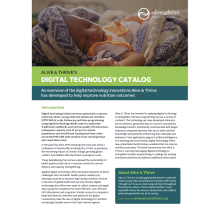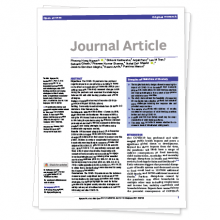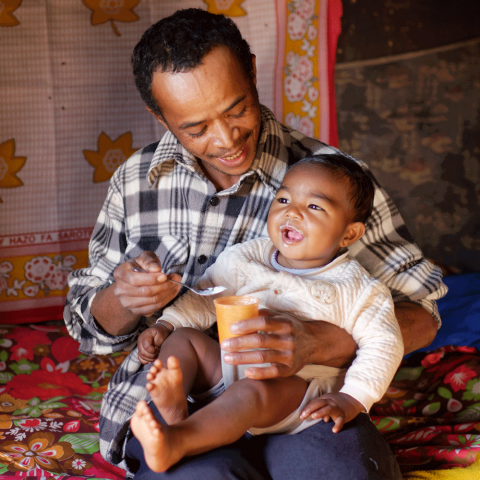Toolkit
Feb 01 2024

Alive & Thrive Digital Technology Catalog: An overview of the digital technology innovations Alive & Thrive has developed to help improve nutrition outcomes
Journal article
Jan 26 2024

First foods in a packaged world: Results from the COMMIT consortium to protect young child diets in Southeast Asia (Blankenship JL, White JM, et al. Maternal & Child Nutrition. 2023)
Forty-four percent of all foods and 72% of snacks commercially marketed for young children in Southeast Asia contained added sugars, a study by the Consortium for Improving Complementary Foods in Southeast Asia (COMMIT) initiative found.
Journal article
Jan 26 2024

Overpromoted and underregulated: National binding legal measures related to commercially produced complementary foods in seven Southeast Asian countries are not fully aligned with available guidance (Blankenship J, et al. Maternal & Child Nutrition. 2023)
Journal article
Jan 08 2024

Bridging the evidence-to-action gap: enhancing alignment of national nutrition strategies in Cambodia, Laos, and Vietnam with global and regional recommendations (Nguyen TT, Huynh NL, et al. Frontiers in Nutrition. 2024)
This journal article details Alive & Thrive’s examination of the alignment of recent National Nutrition Strategies and Action Plans (NNS) in Cambodia, Laos, and Vietnam with recent global and regional recommendations and standards with a focus on maternal, infant, and young child nutrition an
Journal article
Nov 28 2023

Case Report: I feel like a mother to other babies: experiences and perspectives on bereavement and breastmilk donation from Vietnam (Tran HT, Nguyen TT, et al. Frontiers in Global Women's Health. 2023)
There is a growing global recognition that post-perinatal death care should potentially provide the opportunity for maternal donation. This article explores the experiences of bereaved mothers in Vietnam who chose to donate breastmilk following perinatal loss at the Da Nang Human Milk Bank.
Journal article
Nov 28 2023

Maternity protection policies and the enabling environment for breastfeeding in the Philippines: a qualitative study (Maramag CC, Zambrano P, et al. International Breastfeeding Journal. 2023)
The Philippines has enacted maternity protection policies, such as the 105-Day Expanded Maternity Leave Law and the Expanded Breastfeeding Promotion Act of 2009, to protect, promote, and support breastfeeding.

